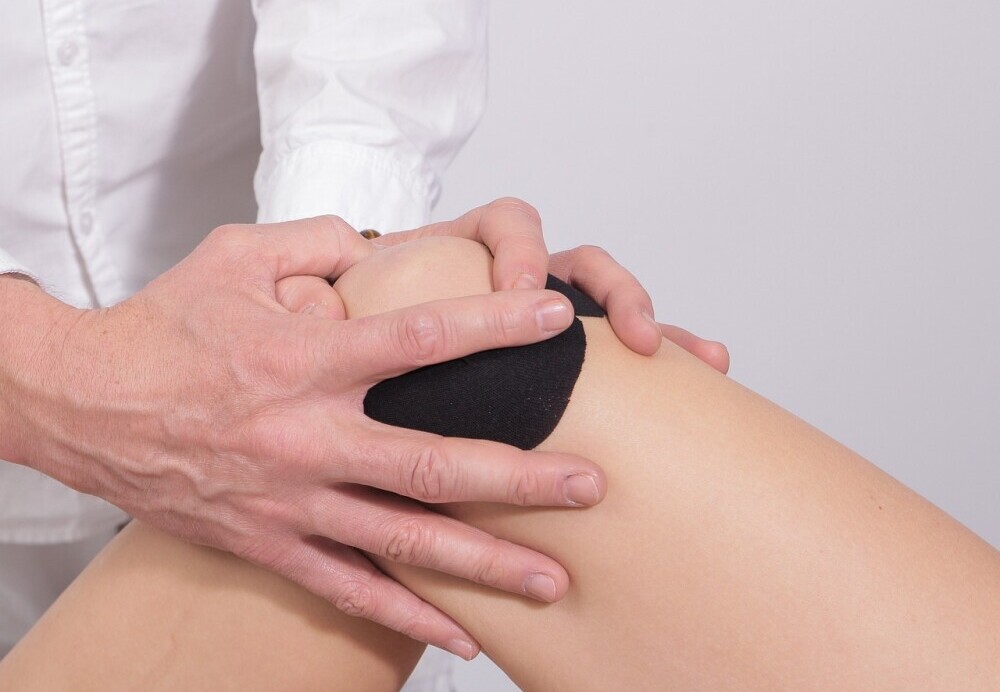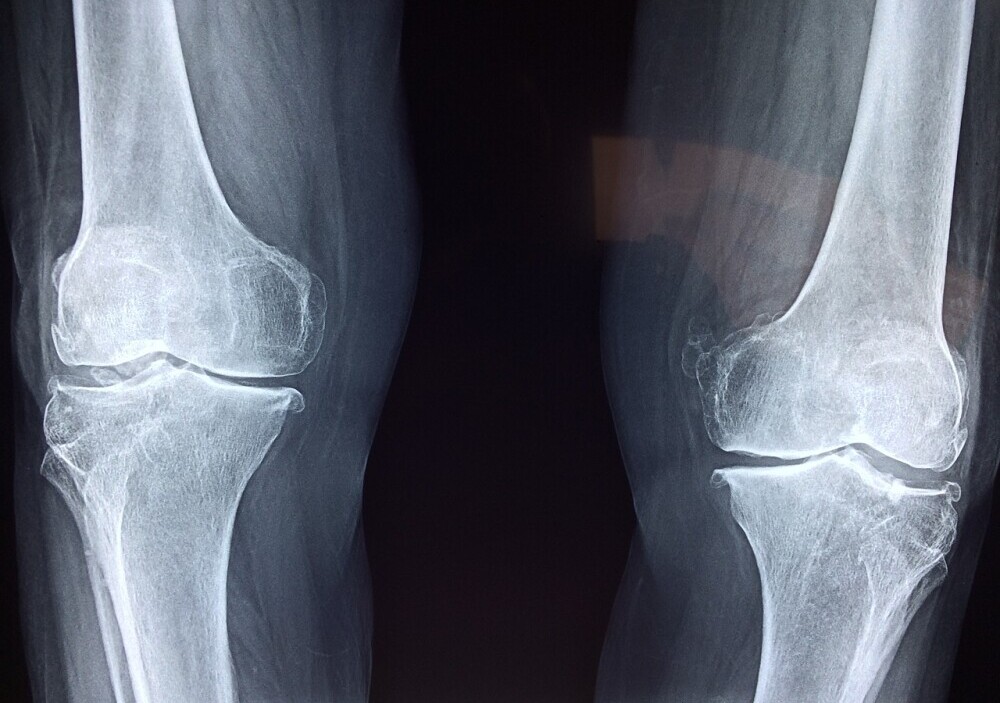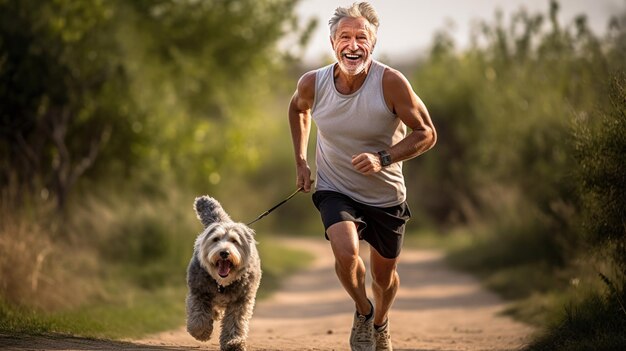I find running to be one of the most enjoyable and accessible forms of exercise, accessibility being especially important for beginners. If you’re just getting started running your new routine may come with new and unfamiliar joint stresses and discomfort. Exercise induced knee pain is one of the most common that often comes up among new runners. So, many commonly ask, “is a knee brace a good idea”. In this article, I take a close look at the knee and discuss knee braces and knee sleeves to explain if and how they might be useful for beginner, as well as all, runners.

What causes knee pain from running?
Knee pain in beginner runners often arises from overuse, poor biomechanics, muscle imbalances or weakness, or underlying conditions like Patellofemoral Pain Syndrome (runners’ knee), Iliotibial (IT) Band Syndrome or arthritis.
Overtraining can cause inflammation and pain. Another type is called Repetitive Strain from the repetitious nature of running especially if the body isn’t properly conditioned. Poor Biomechanics encompass things such as improper foot strike like landing on the heel which can transfer impact to the knee, or poor alignment.
Muscle imbalances like weak or overly tight muscles, especially in the hips, thighs, and ankles can result in poor knee alignment reducing joint stability. Also, weak stabilizing muscles such as core and gluteal muscles can contribute to inadequate knee alignment.
Specific conditions such as Patellofemoral Pain Syndrome, which is characterized by pain focused around or behind the kneecap (patella) and is often made worse by running downhill or on uneven ground.
The other most common condition is IT (iliotibial) Band Syndrome and is the result of inflammation or tightening of the IT band which is a thick band of connective tissue that runs along the outside of the thigh.
These are underlying physical conditions that can be made worse by running and can cause significant knee pain. So, what can you do?
Are Knee Braces Beneficial for Beginner Runners?
Many beginners look to knee braces or sleeves for extra support to counteract any unfamiliar strains during their early training. Knee supports may offer a level of stability that can help to minimize discomfort and prevent minor injuries.
It is important to know that while knee braces have many benefits, they cannot fix underlying structural issues. Their role is more about adding support, stability, and comfort while your body builds strength and adjusts to the new demands of regular running.
For those new to running, it is predictable and not unusual for beginners to feel a bit of soreness after a few runs. Knee braces can provide extra support during the start of a running career and far beyond by stabilizing the joint and reducing the excessive movement that might contribute to pain and in the worst scenario, an injury.
Understanding Knee Supports in Running
Knee sleeves are significantly different from Knee braces. Knee Sleeves are designed to provide extra compression around the knee area. Compression can improve blood circulation, reduce swelling, and help to ease the strain during a workout. By offering a snug fit, these supports work to distribute pressure evenly supporting the joint and blood flow, which may help in reducing inflammation after exercise sessions.
“Do knee supports work for running?” The quick answer is “Yes”. For someone who is new to running, even a modest level of joint compression, such as a knee sleeve, can be very beneficial. However, they should not be seen as a substitute for proper strength training and warm-up exercises.
A number of factors affect how well it will work for you. Your anatomy, age, and weight, level of fitness, your running style and any previous history of knee problems all play an important role in determining their effectiveness.
When considering the best knee support for running, look for options that offer flexibility and comfort in addition to support. Many products on the market feature moisture-wicking fabrics, adjustable straps, and a lightweight design. For a beginner, having a support that is easy to wear and move in can make a significant difference in how comfortable the running experience is overall.
Comparing Knee Brace Options: Knee Brace vs. Patella Strap
There is debate among runners and sports therapists about whether a full knee brace or a patella strap might be better for a given situation. “Is a patella strap better than a knee brace?”, read on.
A patellar tendon strap is a smaller, more focused device placed just below the kneecap (patella). The primary intent is to provide targeted pressure on the patellar tendon. This targeted pressure can help redistribute some of the forces during running, which in turn may reduce discomfort at the front of the knee.
Many runners with minor issues find that wearing a patella strap during their runs alleviates their discomfort.
On the other hand, knee braces are more substantial and usually offer structural support across the entire knee. They can be particularly effective if you experience pain from a variety of conditions or have a history of knee injuries. For beginners who are uncertain, a knee brace might feel more secure because it is more supportive and covers a larger area.
Special Considerations and Variations
When choosing to use a knee brace, there are several related factors worth considering. This section covers topics like the best knee support for running with arthritis, understanding what runner’s knee is, and knowing when you should not wear a knee brace.
Best Knee Support for Running with Arthritis

For runners who also suffer from arthritis, striking a balance between ease of movement and sufficient support is very important. Knee supports intended for arthritis often incorporate extra padding and adjustable compression systems. They aim to reduce the impact on joints while keeping the knee stable during motion.
It’s a good idea to pick a knee support that offers a snug but not overly tight fit. This way, you get the benefits of compression without impairing circulation. Many arthritis-friendly knee supports feature adjustable supports to help you fine-tune the level and distribution of pressure applied, making them customizable to your needs.
What is Runner’s Knee?
Runner’s knee is a common term for a condition that affects many new runners. It typically refers to pain around the outer area of the kneecap, which can result from overuse, improper running form, or a lack of support.
Runner’s knee symptoms can vary. Some runners experience a dull ache, while others feel more intense discomfort after running. In cases where the pain lingers, it is recommended to adjust your running routine and consider using additional supports like a knee brace to help manage the irritation.
Mild cases of runner’s knee are often manageable with rest, proper warm-ups, and sometimes the use of a brace or strap. However, if the pain continues or worsens, it may be necessary to consult with a healthcare professional for advice.
When Should You Not Wear a Knee Brace or Sleeve?
While knee braces and sleeves can be beneficial, there are times when their use might be less appropriate. For instance, if you have an acute injury such as a ligament tear or are experiencing severe pain, wearing a knee brace without proper medical guidance could worsen the condition.
Additionally, over-reliance on knee braces might encourage muscle weakness over time. This is particularly true for beginners whose muscles are still adjusting to the demands of a consistent running routine. To get the full benefits of your training, it’s best to incorporate strength and flexibility exercises that complement any external support.
Getting Started with Knee Brace Use for New Runners
If you are a beginner runner considering a knee brace, it is helpful to ease into its use gradually. Starting with short runs allows you to adjust to the added feeling of support without overwhelming your body.
Here are a few pointers to help you start using a knee brace effectively:
- Choose the Right Fit: Look for a knee brace that is adjustable and suitable for your size. A well-fitting brace will provide reliable support and avoid discomfort that might lead to chafing or restricted movement.
- Practice With It: Wear your knee brace during shorter, slower runs in the beginning. This allows you to get a feel for how it supports your knee without putting too much strain on other areas.
- Monitor Your Body: Pay attention to how your knee responds during and after running. If you experience unusual pain or discomfort, consider adjusting the fit or taking a break to reassess whether the brace is right for you.
- Combine With Other Supportive Techniques: Continue with warm-up exercises, stretching, and strengthening routines. A knee brace works best as an aid to these practices and should not replace them entirely.
- Consult a Specialist: If you’re unsure about which product to choose or if you have a history of knee issues, ask a sports therapist or an orthopedic professional for advice.
Extra Tips for Long-Term Knee Health and Running Efficiency
For runners looking to ensure long-term knee health, there are additional strategies that can truly make a difference.
First, it is vital to incorporate a comprehensive routine of strength training and flexibility exercises. This includes working on not only the muscles around the knee but also the hips, glutes, and core. Strengthening these supportive muscles can help take pressure off the knees, reduce the likelihood of injury, and ultimately lead to a more enjoyable running experience.
Another important tip is to pay attention to your running form. Often, small adjustments in your posture, stride and foot strike can make a big impact on how your knees feel. For example, keeping your body aligned and ensuring that your feet land evenly can reduce the shock transmitted through your joints.
Additionally, proper recovery techniques must be a part of your routine. Taking a few minutes after each workout to cool down with light stretches or foam rolling can significantly diminish muscle tension reducing stress and pull on the joints especially the knee.
Hydration and nutrition also play a very important role in maintaining joint health. Foods rich in omega-3 fatty acids, antioxidants, and vitamin D help reduce inflammation and support cartilage repair.
It’s also worth mentioning that varying your running surfaces can benefit your knees. Running exclusively on hard concrete or pavement can increase the stress on your joints, so try mixing in softer trails or tracks when possible. This not only provides a break for your knees but also adds diversity to your running routine, keeping the experience exciting and less monotonous.
Wrapping Up
Incorporating a knee sleeve or brace into your running routine can be a helpful strategy for beginners. These supports provide added stability and compression that can reduce discomfort and boost your confidence as you build your running routine.
Keep in mind that knee braces are most effective when paired with a consistent routine of proper warm-ups, stretching, and strength exercises. Whether you opt for a knee sleeve, full knee brace or a focused patella strap, the key is to find the right balance of support and flexibility to suit your unique needs.
Remember, running is an adventure that comes with its ups and downs. Building strength, experimenting with gear options, and listening carefully to your body’s signals are all essential to long-term success. Stay motivated, keep refining your technique, and most importantly, keep running.


Really useful post—this is a question I had when I first started running, especially after dealing with some light knee discomfort early on. It’s easy to assume a brace is a quick fix, but I appreciate how you emphasized understanding the root cause before relying on gear.
One thing I’ve been wondering: is there a specific type of knee brace that’s best suited for beginners who are just looking for light support, rather than injury recovery? And at what point would you suggest someone see a professional instead of just experimenting with gear on their own?
It’s a great reminder that while supportive gear can help, building proper form and strength is just as important. Thanks for addressing a common concern with a balanced approach!
Hi Tommy,
For most beginners a simple knee sleeve is a good item to start with. They are inexpensive and, in many cases, relieve the discomfort if there is no actual injury. I have been running for over 40 years and that is still all I wear.
If the knee discomfort does not improve with the knee sleeve you could advance to a brace. Braces are more structurally substantial and usually incorporate more rigid stays to support the joint from excess movement.
Beyond that, if your knee pain persists, gets worse or if you think you have an injury, I strongly recommend seeing a clinician. Continuing to put unsupported load or stress on the knee can lead to more serious or even permanent damage. The knee is perhaps the most unstable joint in the body, so you should take knee issues seriously.
Thanks for reading my article.
Kevin
I used to run. I began having knee pain, and my dr told me the best to do was stop running. But I do love running and I would sure like to pick it back up. My son was a highly competitive gymnast and he wore patella straps quite frequently. So I am wondering if this would help solve my knee pain problem if I were to start running again.
Hi Leahrae,
“just stop running” huh… If you have a serious knee condition than that would be the most prudent advice. If not, I disagree that stopping your running is a good solution, unless you can replace running with something like swimming. With swimming there is no impact to the joints, and it requires more muscle groups than running. But that requires access to a pool, and usually more time.
The problem with simply stopping your exercise routine is that exercise is an essential part of any healthy lifestyle. I have found that almost any physical malady is mitigated if you are fit and stay fit. It is always better to stay fit. But if you have a serious condition that precludes running than you should substitute another form of vigorous exercise. Biking, swimming, aerobics all come to mind. Anything that raises your heart and respiratory rate.
Regarding getting back into running and the question of the patella strap. I understand your desire as I really do love to run. I cannot speak to your situation as I do not know any of the specifics of your knee pain or condition. If you do not have an injury or a serious knee problem, just discomfort associated with running, you could try a patella strap or a knee sleeve. If the trouble persists you could see a clinician – NOT the same doc as before – and let them know that you are looking for advice and guidance that will help you maintain your running routine. Options are a Physical therapist or someone in Sports Medicine like an Exercise Physiologist. You may even benefit from an orthopedic consult if you have a more serious knee condition.
I hope I have answered your question and given you some actionable advice that will be favorable to your cause of getting back into running and committing to your own health and fitness.
Thanks for reading my article.
Kevin